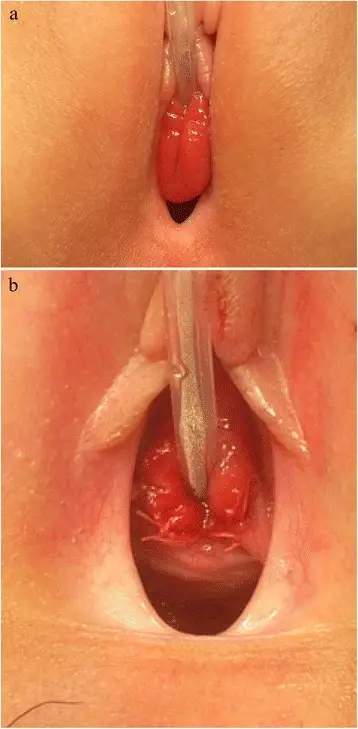The urethral caruncle is a benign cutaneous condition characterized by distal urethral lesions that are most commonly found in post-menopausal women. They appear red and can be of various sizes. These epidermal growths are found around the posterior portion of the urethral meatus.
What is the Pathology of Urethral Caruncle?
The pathology of the urethral caruncle is:
-Etiology: The cause of urethral caruncle is reduced estrogenization of urethral smooth muscle.
-Genes involved: Not well-understood.
-Pathogenesis: The sequence of events that lead to urethral caruncle is urogenital atrophy due to estrogen deficiency.
-Morphology: The morphology associated with the Urethral caruncle appears red, and can be of various sizes. They can have the appearance of a tumor. These epidermal growths are found around the posterior portion of the urethral meatus.
-Histology: The histology associated with the urethral caruncle shows papillomatous, angiomatous, and granulomatous.
How does Urethral Caruncle Present?
Patients with urethral caruncle typically affect females in the post-menopausal age group. The symptoms, features, and clinical findings associated with urethral caruncle include dysuria, urinary frequency, obstructive symptoms.
How is Urethral Caruncle Diagnosed?
A urethral caruncle is obvious on physical examination. Additionally, cystoscopy can be helpful.
How is Urethral Caruncle Treated?
The urethral caruncle is treated by excision.
What is the Prognosis of Urethral Caruncle?
The prognosis of the urethral caruncle is excellent if pathology confirms the urethral caruncle as the diagnosis.



